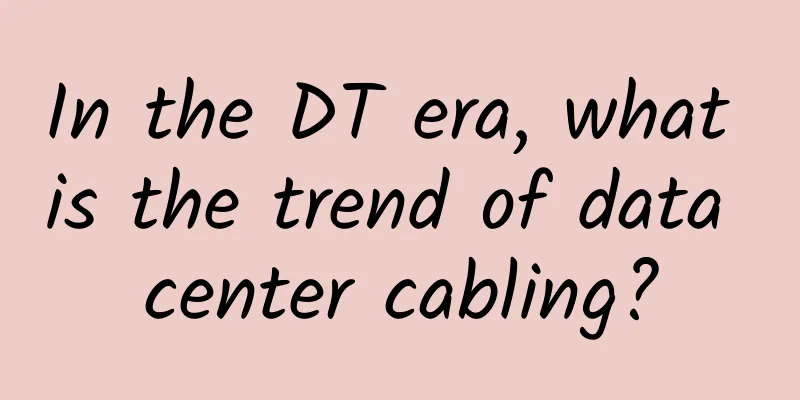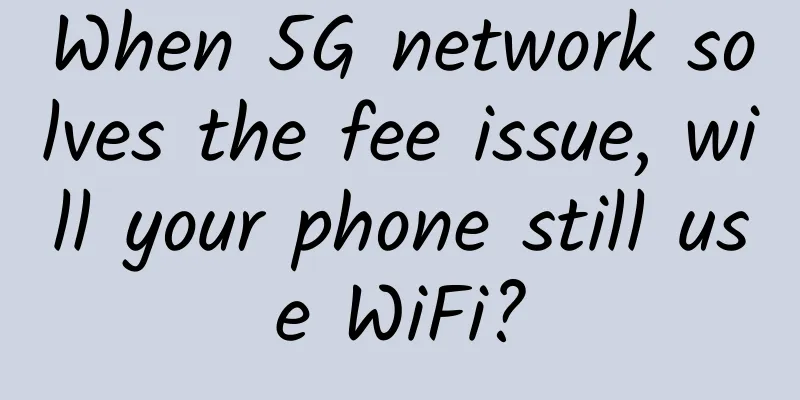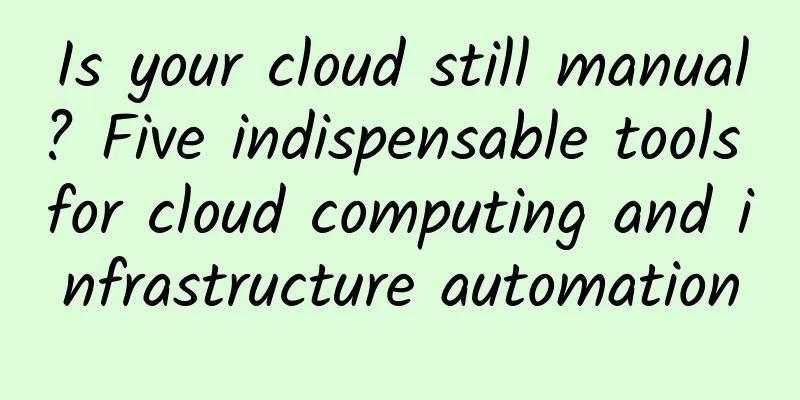The Internet can also get stuck?! There are three magic weapons to solve it!

|
Highways will be congested, and the Internet, the information highway, will also be congested. It has been a while since the Chinese New Year. I believe everyone has experienced the painful experience of being stuck on the highway for a whole day and night while driving home during the Spring Festival. Due to the limited width of the road and the limited efficiency of traffic workers, traffic jams will occur when the traffic volume reaches a peak in a short period of time. If the network is compared to a highway and data traffic is compared to traffic volume, then network bandwidth and other resources and the ability to store and process data are limited, which will also cause network congestion when sudden traffic occurs. Network congestion not only wastes resources, but also causes business anomalies in serious cases. As a common network problem, is there any mechanism to improve the utilization rate of network resources and provide better network service quality? In order to solve this problem, QoS (Quality of Service) was born! Tips: There are four factors that affect the quality of network services: bandwidth, latency, jitter, and packet loss rate. These four factors are also QoS quality indicators. For a detailed introduction to the four factors of network quality, you can read Network Freeze. These four factors are very important. How does QoS improve network service quality? How does QoS regulate network traffic to avoid and handle network congestion? QoS improves the quality of network services for users through three service models. The following will introduce these three models in detail. 1. Best-Effort Service ModelA simple service model, implemented through a FIFO (First in First Out) queue. For example, if Xiaoming needs to copy a file from an FTP server to his computer, Xiaoming's computer needs to send a message to the FTP server and obtain messages from FTP to form the file. The computer can send messages at any time without notifying the network. The sent messages are not classified and marked in the network and directly enter the FIFO queue for forwarding or discarding. This service model is suitable for services such as FTP and E-Mail that do not require high quality indicators. 2. IntServ service model (Integrated Service)This model works by applying for QoS requirements through RSVP (Resource ReSerVation Protocol). When watching videos on a mobile phone, the mobile phone sends a message to the network video server, and obtains messages from the video server to form a video screen in the mobile phone. Before sending a message to the server, the mobile phone notifies the network of the traffic configuration of the message to be sent and the specific service quality request required. All transmission devices that the message will pass through confirm these requests. Then the video server applies for resource reservation from the network. All transmission devices that the message will pass through in the network are the messages sent by the mobile phone to the server. After reserving resources, the mobile phone starts to send messages to the server, and the message traffic sent by the mobile phone must be within the application range. This model is not suitable for backbone networks with large amounts of data, and is currently mainly used with MPLS-TE (Multi-Protocol Label Switching-TE, multi-protocol label switching based on traffic engineering). RSVP works at the transport layer, starting from the first node, using a path message (Path) to request resources from each node hop by hop, and after reaching the destination, using a reservation message (Resv) to reserve resources hop by hop in the reverse direction. 3. DiffServ service model (Differentiated Service)This model is generally used to provide QoS for some important applications, mainly including traffic classification and marking, traffic policing, traffic shaping, interface speed limiting, congestion management and congestion avoidance, etc. Below I will take a convoy of 5 trucks on Highway A as an example to introduce how device A processes and forwards a 5-bit message under this service model. Traffic classification and markingThere are different convoys on the road, including transport convoys, parade convoys, travel convoys, etc. These convoys have different tasks to complete and have different needs for traffic services. In order to provide differentiated services to convoys with different businesses, traffic service personnel will classify the service levels of each incoming convoy according to service needs. After classification, different marks will be attached to the corresponding positions of the convoy leaders to identify the priority level of the convoy in handling traffic. Traffic policing and traffic shapingAn automatic card dispenser is placed at the entrance and exit of Highway A. The card dispenser continuously puts passes into the card bucket (token bucket) at a certain rate. At this time, a team A with 5 vehicles came. Xiao Ming, the leader of the team, received 5 passes from the card bucket. Only then could Xiao Ming's team pass. At this time, there were only 3 passes in the bucket. After Xiao Ming took out the passes from the bucket, he found that the number was not enough. They did not allow him to pass. Xiao Ming had to put the 3 passes back into the bucket in frustration and look for other ways. In order to limit the business traffic within a certain bandwidth and prevent network congestion, the token bucket mechanism is used to evaluate the message, discard the message that exceeds the flow, and the message that does not exceed the flow enters the queue scheduling or forwarding process. This process is called traffic regulation. Congestion ManagementA team was on Highway A when suddenly there was a traffic jam ahead. Xiao Ming and his team had to enter the dispatch queue to accept the arrangement and coordination of the traffic control personnel. The control personnel looked at the marks on the leader's car and began to discuss the dispatch plan, and then coordinated the order of each team in the team. When network congestion occurs, the message is put into the queue for cache and the process of arranging the forwarding order of the message by using queue scheduling algorithms such as PQ, CQ, WFQ, WRR, and DWRR is called congestion management. Congestion AvoidanceTraffic controller Xiao Wang is always observing the traffic situation. Xiao Wang found that the traffic was getting more and more congested, so he decided to adopt a strategy to strongly prohibit all or some of the vehicles behind him from passing, so as to alleviate the traffic congestion. The process of using a discard strategy when the network is congested and actively adjusting the traffic to relieve the network overload is called congestion avoidance. Traffic ShapingWhen the A team arrived at the exit, they only received one pass. After returning the pass, Xiao Ming and his team had a high priority and could wait in line for the traffic control personnel to arrange and dispatch. After the dispatch, Xiao Ming got 5 passes from the bucket and finally passed smoothly. Traffic shaping is a flow control measure that uses the token bucket mechanism to evaluate the message at the device exit. The messages that exceed the flow rate enter the queue cache for processing. Interface rate limitInstead of distinguishing between fleets, a unified system of traffic control or traffic shaping is adopted for all vehicles entering and leaving the entrance and exit. QoS upgraded version HQos improves network service quality better? With the rapid development of the Internet, the scale of network users continues to expand, and the number and types of services continue to increase. Traditional QoS is no longer suitable for deployment on the user access side, and it is impossible to monitor and schedule the traffic of multiple services of multiple users. In order to solve this problem, QosHQos (Hierarchical Quality of Service) was born! HQoS also improves the quality of network services. The difference from traditional QoS is that HQoS can divide scheduling queues into multiple scheduling levels, and each level uses different characteristics to regulate traffic. HQoS can not only differentiate service traffic in a more detailed manner, but also perform unified traffic supervision and hierarchical scheduling for transmission objects such as multiple users and multiple services. Today, we got the following knowledge! The network is an information highway and QoS is needed to avoid traffic jams.
|
<<: It feels so good to be validated!
>>: Huawei's Song Xiaodi: Breaking five misconceptions and accelerating green development
Recommend
Let's talk about TCP
In our daily development, we will more or less be...
5G "new infrastructure", new scenarios, new models
Since the beginning of the year, the central gove...
What should you do if you forget the wireless router backend login address?
If you want to modify the configuration of the wi...
The 5G era is accelerating. When will edge computing replace "core" computing?
In the 5G era, the number of connected devices wi...
The 18th China Enterprise Annual Selection List for 2023 was announced: Huawei CloudEngine S5731-L Series 2.5G Ethernet All-Optical Remote Module won the 2023 China IT Industry Campus Network Excellent Product Award
In November 2023 , the " China Enterprise &q...
Do you always feel that the Internet speed is slow? You may be in trouble
We say that there are many reasons for slow Inter...
Europe lags behind in 5G rollout, study shows
According to an assessment report released by the...
BudgetVM: Los Angeles/Dallas/Chicago/Japan/Hong Kong dedicated servers starting at $49 per month
BudgetVM is a local data center founded in 2015. ...
In the global 5G competition, who will be the ultimate beneficiary?
Leifeng.com: To understand cellular technology, y...
A seminar on hypertension prevention and control was held, and Omron helped China to upgrade its hypertension management to a smart level
On December 5, 2019, the "To the Classic, Cr...
「Product News」Interpretation of Dataphin's real-time R&D of batch and stream integration
background Every time the bell of the Double 11 g...
ZJI: Hong Kong server Alibaba dual-line order discount -350 yuan, Hong Kong high defense discount -1500 yuan
ZJI has released promotional offers for December ...
Huawei launches OceanStor Dorado V6, a new generation of intelligent storage, explaining how data creates value
[51CTO.com original article] Huawei recently rele...
How to design a small company network with more than 200 people
[[421158]] Project Requirements XX small company ...
DigitalVirt: 95 yuan/year-1GB/10GB NVMe/1TB@200Mbps/Hong Kong International Line
DigitalVirt recently offered a 50% discount coupo...









